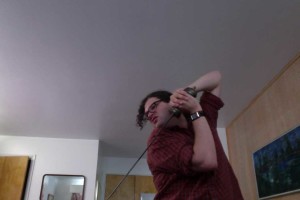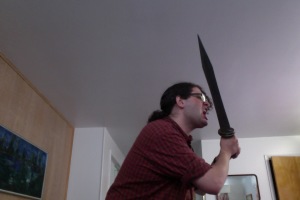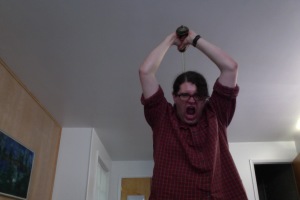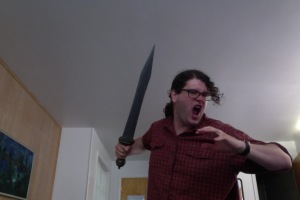TERTIA POST ILLAM SUCCESSIT AENEA PROLES,
SAEVIOR INGENIIS ET AD HORRIDA PROPTIOR ARMA,
NON SCELERATA TAMEN. […]
AFTER THAT, THE THIRD AGE WAS OF BRONZE,
MORE SAVAGE IN NATURE AND QUICKER TO HORRID ARMS,
NOT WICKED, HOWEVER. […]
Um…. there’s not much to say here; either on my part or Ovid’s, apparently. This isn’t even three lines worth of the Metamorphoses: line 127 is half Bronze Age, half Iron Age (we’ll get to the other half next week). The Bronze Age is indeed a bit of a redheaded-stepchild in the Myth of Ages. Aratus conflates the qualities of the Iron Age into the Bronze Age, which concludes his version; Vergil shys away from the metal-imagery in the Georgics, and speaks only of times before and after Jupiter’s reign; only Hesiod gives the age a detailed account. At Works and Days 143-55, he paints a portrait of a terrifying race of blood-thirsty killers, who spend all their time making war on each other (and living in bronze houses, which always makes me chuckle). Hesiod is equally interested in how the people of the ages were made and died (something Ovid ignores), and says the Bronze Race ended up killing each other off with their warring. In Hesiod, the Bronze Age is succeeded by an age of ‘heroes’, such as the warriors at Troy and other greats of Greek mythology. (~spoiler warning~)* Ovid wants these figures to come into his story later, and can’t put them at the beginning so he has the Bronze Age prefigure the violence of the Iron Age, while the Heroic Age is shuffled off-stage (to be fair, it always bothered me that there was one Hesiodic age without a metal in its name…)(~/spoilers~)
The Hesiodic version definitely inspired my art here (I wasn’t exactly given much to go on in the Metamorphoses), and the bronze men get up to all kinds of warfare. I think, even in the short lines devoted to it, Ovid’s Bronze Age has a decidedly Hesiodic feel to it. So, the imagery is appropriate. As for why 2.5 lines get their own page (not the first time, thinking back to page 2), it’s simply a question of symmetry: there are four ages, so I will make four pages. Ovid may not have made the ages the same length, but I felt the number superceded the length of each. The page is still fast to read – almost as fast as the 2.5 lines are, I’d reckon – but this way, I am able to follow the sectioning Ovid accomplishes with the words “first”, “second”, “third” and “last”. In the end, I think the lack of text allowed me to stretch as an artist. I was able to do a big portrait, rather than a series of panels, which is always a nice change every now and then. Moreover, the subject matter gave me an excuse to play with swords for “research purposes”. I’ll leave you with some “data” from those “experiments” below:
*I still can’t tell if I’m ridiculous or not for protecting people from spoilers of a 2000+ year old story. However, my hope is that a number of my readers will be experiencing Ovid for the first time, so I want to preserve the magic of reading him fresh if at all possible.





Discussion ¬